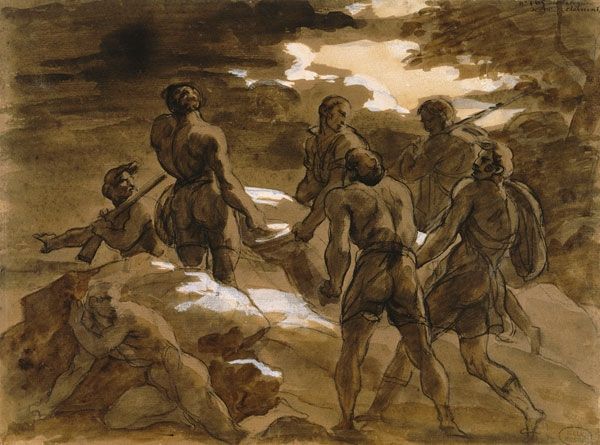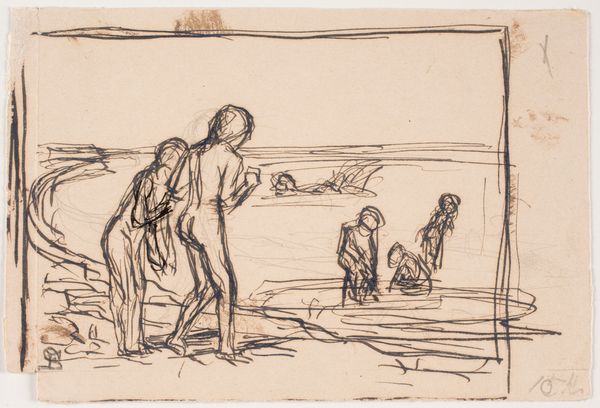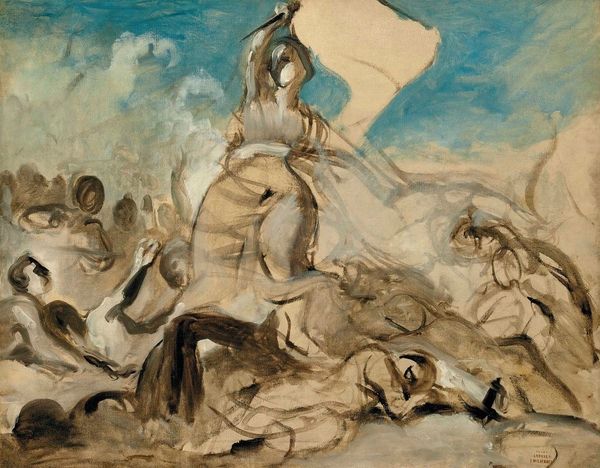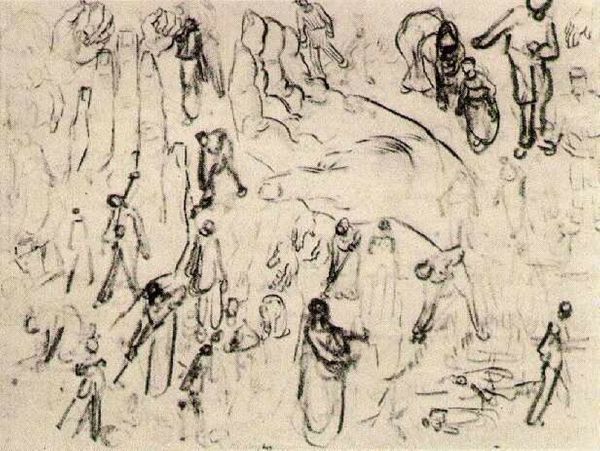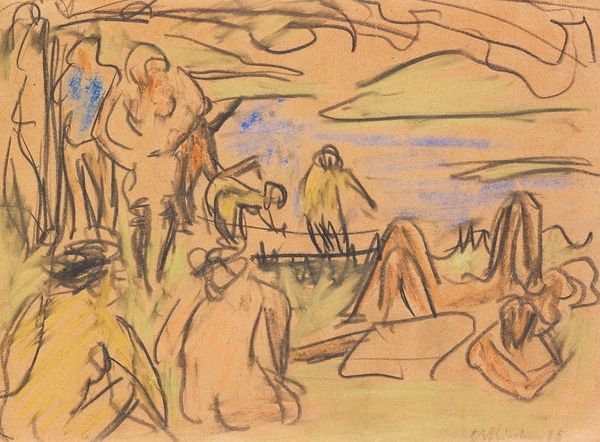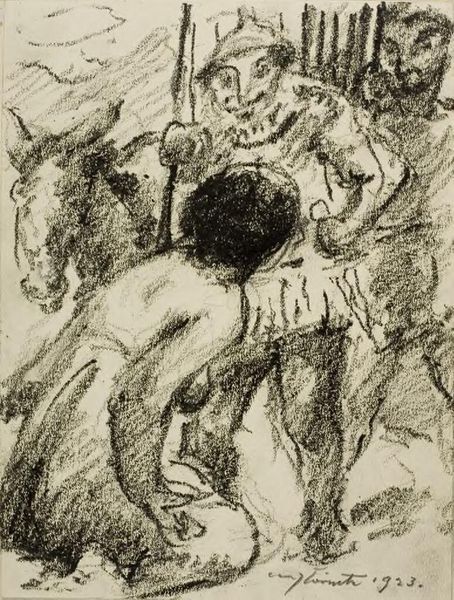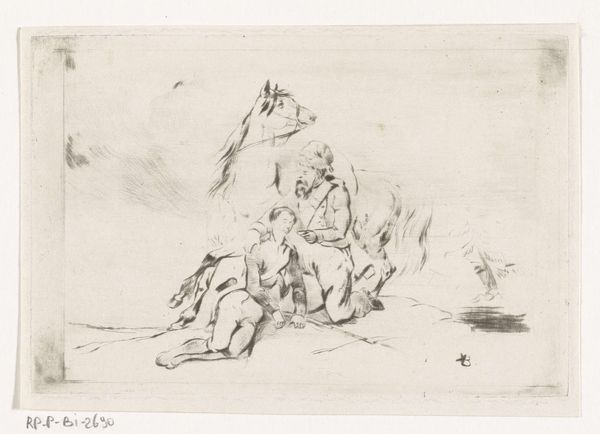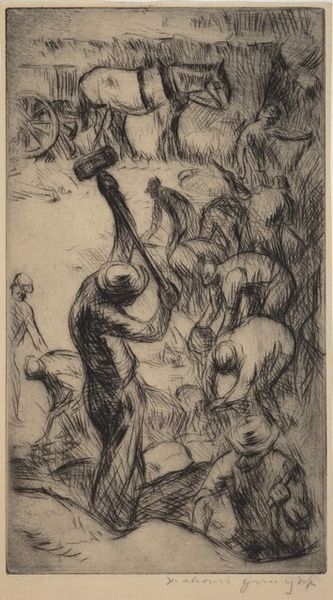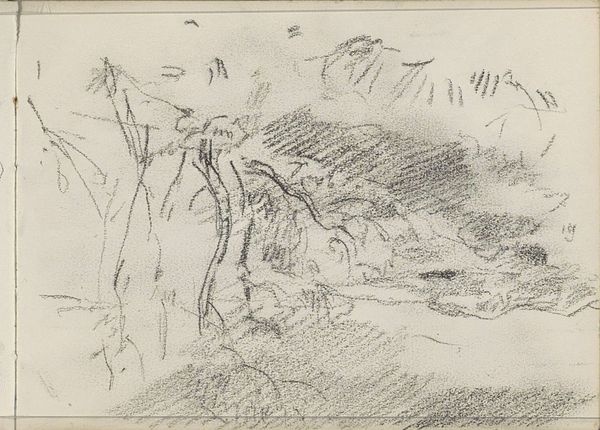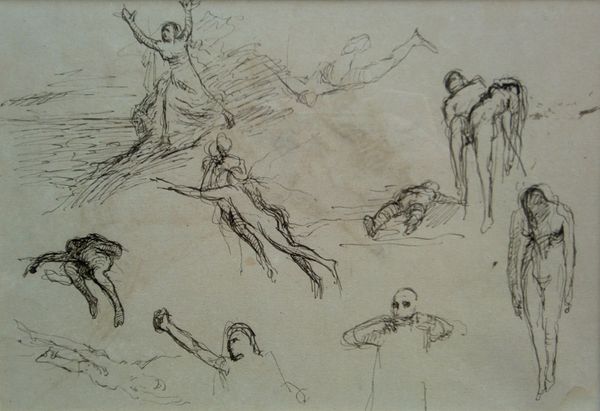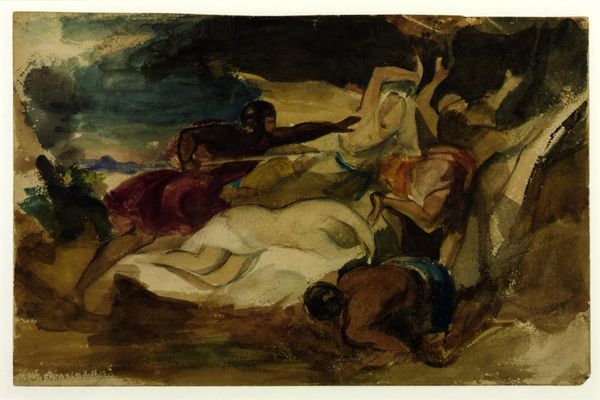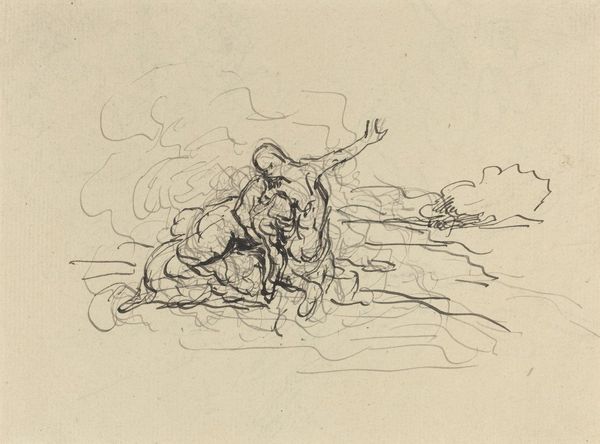
Copyright: Public domain
Curator: Let's turn our attention to "The Harvesters," a watercolor and pencil work created by Paul Cézanne around 1878. What are your initial impressions? Editor: There's an immediate sense of the cyclical nature of labor. It's a scene of rural life, imbued with the symbolism of harvest and rest. The way the figures are placed creates a very intimate feeling, a glimpse into the past. Curator: The work very much reflects Cézanne's interest in depicting scenes of everyday life. Given the time period, it is not far-fetched to understand this illustration in terms of class identity and manual work. The theme of peasants toiling in the fields—it wasn't just an aesthetic choice, it reflected social realities. Editor: Absolutely, but the harvesters themselves, with their bending and resting forms, remind me of images found in classical art, where agricultural scenes celebrate the abundance of nature. The image possesses an archetype, where labor appears more like a communal engagement. Curator: It is a refreshing point. It pushes the reflection to gender representations. What can we interpret from the apparent division of labour? Is Cézanne simply depicting a division of work, or is there a more charged tension in these arrangements? Editor: Look closely, how light plays off each individual! These aren’t photographic portrayals, it’s an artistic distillation of a concept of "the harvest." I see, not so much literal people, as icons embodying concepts and memories tied to seasonal abundance. Curator: I find the apparent incompleteness of the watercolour technique interesting. There’s an almost sketched quality, as if these are working figures who exist on the margins and lack material security. Editor: The haziness may speak to the ephemeral and continuous nature of life itself! Perhaps this scene depicts an intimate connection between humanity and earth. I find the absence of hard lines conducive to my vision of life and its continuation through time. Curator: Ultimately, it's a painting that allows for many readings. We are invited to connect the image to the context of France in the 19th Century, while also exploring ideas of labour and continuity in time. Editor: It shows how images, simple as they may be, reverberate with timeless symbols of sustenance, perseverance, and humanity's bond with the earth.
Comments
No comments
Be the first to comment and join the conversation on the ultimate creative platform.

